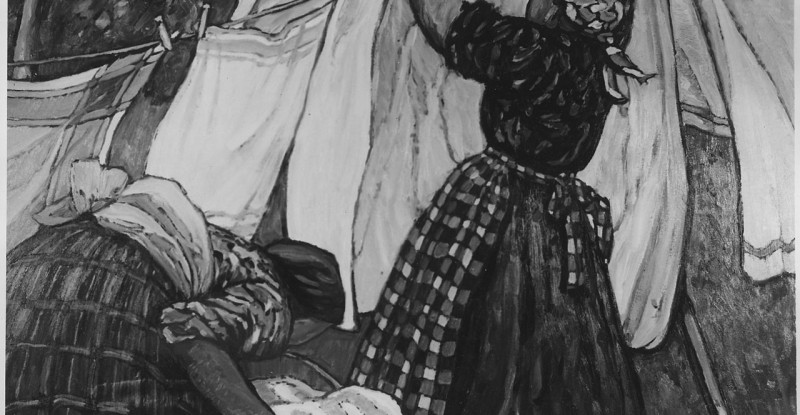By DREW GILPIN FAUST
 he Emancipation Proclamation did not bring freedom to the four million African-Americans who lived in slavery in 1863. Instead, blacks had to claim and define that freedom in tens of thousands of acts of self-assertion during the decades that followed slavery’s legal demise. ”To ‘Joy My Freedom” vividly depicts one neglected aspect of that struggle by focusing on the lives of urban black women, in particular on those who worked as domestic laborers in the post-Civil War South.
he Emancipation Proclamation did not bring freedom to the four million African-Americans who lived in slavery in 1863. Instead, blacks had to claim and define that freedom in tens of thousands of acts of self-assertion during the decades that followed slavery’s legal demise. ”To ‘Joy My Freedom” vividly depicts one neglected aspect of that struggle by focusing on the lives of urban black women, in particular on those who worked as domestic laborers in the post-Civil War South.
Black men have figured far more prominently than black women in historical accounts of the years after emancipation, for not only did men head the great majority of rural households, but it was the enfranchisement of African-American males during Radical Reconstruction that most directly challenged long-lived Southern hierarchies of race and power. Tera W. Hunter, an associate professor of history at Carnegie Mellon University, reminds us, however, that black women were an important political and social force as well.
Hunter’s study grew out of her interest in an Atlanta washerwomen’s strike in 1881. African-Americans flocked to Southern cities in the years after Appomattox, yet even urban centers offered severely limited opportunities. Black women found themselves confined overwhelmingly to domestic labor — by 1880, 98 percent of black female wage earners in Atlanta were domestics — and had to struggle to differentiate their new status as freed people from the oppressive experiences of slavery.
These women devised strategies that included achieving literacy, organizing politically and formalizing marriage ties that had been denied them as slaves. Household workers seeking justice took unauthorized work breaks, feigned illness, ”pan-toted” (appropriated) leftovers from employers’ kitchens to compensate for meager wages and, using their ultimate weapon as free laborers, quit in order to gain respite from jobs that required seven days of seemingly endless labor each week.
In the struggle to create lives of their own, laundresses ranked as the most privileged of domestics, for they did not work or dwell in their employers’ households, instead laboring ”together in communal spaces within their neighborhoods.” Thus, they could serve as community builders. In 1881 this independence and group awareness resulted in the Atlanta washerwomen’s strike, involving more than 3,000 laundresses. Hunter argues that this protest exemplified black women’s effectiveness as political actors in a sphere related to, yet separate from, more conventional electoral politics.
In the years that followed, however, racism and segregation tightened their hold on the urban South, erupting in Atlanta in the brutal race riot of 1906. Hunter shows how black working women countered this growing repression by joining with more elite African-Americans to create voluntary associations that provided desperately needed social services.
Their resistance to the tyranny of Jim Crow assumed a variety of other expressions as well: ”a separate and unequal, but vibrant and distinctive, world of entertainment” that included vaudeville, saloons, sporting events, performances by blues singers like Bessie Smith and, perhaps most significant, dance halls. ”Black dance,” Hunter argues, ”embodied a resistance to the confinement of the body solely to wage work.”
But for all her celebration of struggle and resistance, Hunter ends her story with an admission of defeat: black working women did not achieve the ”liberty and justice” they sought. Instead, World War I provided both the final impetus and the opportunity for thousands of African-American men and women to join the great migration north in a continuing search for the freedom that had been promised half a century before.
Drew Gilpin Faust’s most recent book is ”Mothers of Invention: Women of the Slaveholding South in the American Civil War.”
http://www.nytimes.com/books/97/07/13/reviews/970713.13faustt.html

